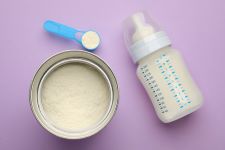Resources
Search >>
Search >>
Learn how data-driven E. coli testing improves process control and food safety in beef plants. Explore sampling strategies, harvest monitoring, and microbial analytics to reduce contamination risks and enhance regulatory compliance.
When you're dealing with a complex matrix, the real question isn’t “Can it be tested?”—it's “What are you hoping to uncover?” Many things can be tested, but the answers depend on asking the right questions. Learn more about testing complex botanical matrices by clicking the link.
Creating shelf-stable nutritional bars and other natural food products is about understanding the science behind food preservation, taste and appearance. One of the most critical factors in the formulation of long-lasting, safe and appealing products is water activity. Water activity plays a major role in maintaining texture, reducing the rate of fats oxidation preventing spoilage and ensuring safety from microbial growth. Keep reading to learn what is being done to create a longer shelf life.
The use of real HMOs in infant formula is accelerating, driven by science, innovation, and a commitment to nourishing infants in the healthiest way possible. Enhanced testing methods are unlocking new capabilities—bringing us closer than ever to replicating the complexity and power of human milk. Click the link to learn more about HMOs.
The dietary supplement industry has become an increasingly regulated industry since the introduction of the dietary supplement GMPs in 2007. There is still to this day an industry confusion as to the requirements needed to comply with the dietary supplement GMP requirement to use a scientifically valid method. So does this mean the method must be validated?
How do you determine the identity of a unknown material I found in my product? Patricia Quinn from Eurofins SF Analytical in New Berlin, WI discusses this topic in this short video. Eurofins publishes our Ask an Expert Series weekly on our social media platforms.
As NIR instrumentation ages or manufacturers discontinue the support for older platforms, it is necessary to look for a replacement. With so many brands and models in the market and manufacturers’ claims of impressive capabilities, how does one narrow down the selection and find the correct choice?
Some minerals are found to interfere with vitamin K2 shelf-life stability in nutraceuticals. Watch our video case study to learn how Eurofins Craft Technologies assists clients experiencing formulation challenges.
This poster evaluates the microbiological safety of immersion method concentrated coffee, and single strength cold brew coffee processed by UHT. The results were used to determine if temperature controls for safety (TCS) should be required for these products during retail.
This poster discusses research with the purpose to validate enrichment concentration as a method for shortening enrichment times to 12 hours for Listeria testing in leafy greens.
















